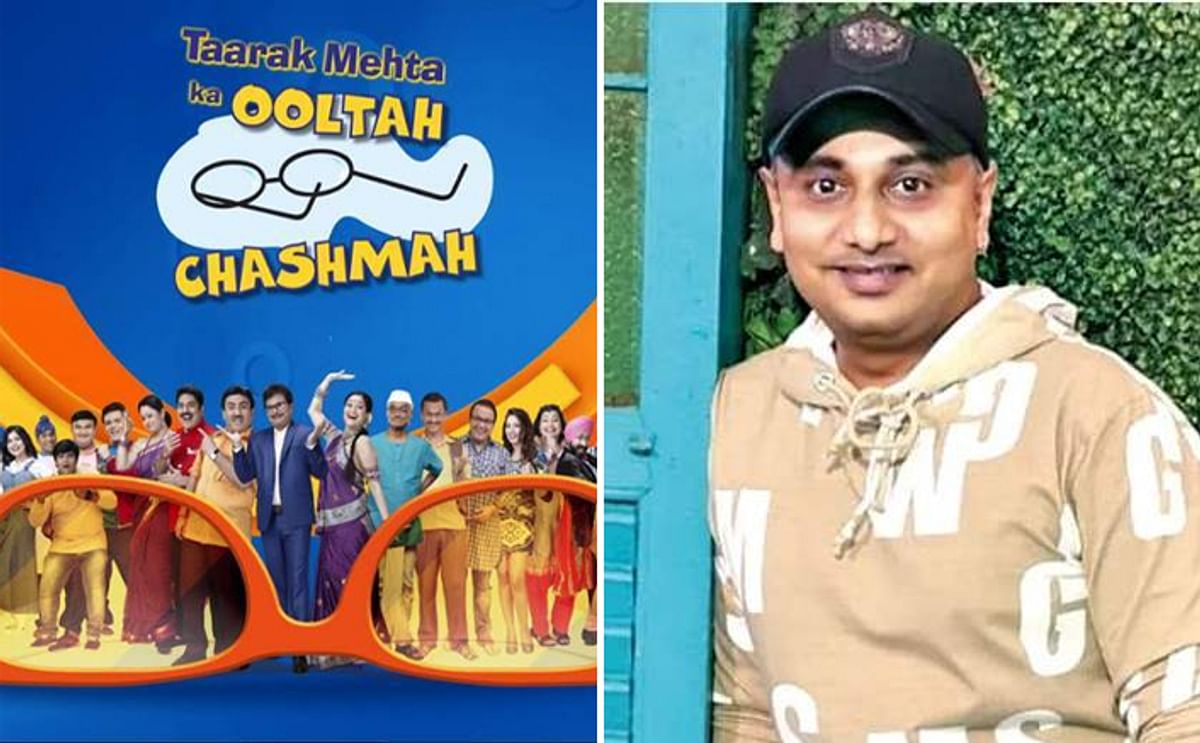How Do We Best Use Email/Messaging/Chat bot?
Email continues to be a handy communication tool, especially in the professional field, where it is still the communication channel most used by most companies and their employees and small businesses.
But to be more effective with email, it is essential that you know some rules of the game and makes good use of apps and other tools that make it easier to send and receive messages.
The first and essential thing you have to do before sending an email is to define if this is the best communication channel for the matter you need to communicate. Email is usually ideal for exchanging ideas, organizing activities with other colleagues, or sending files, such as Word or Excel documents and others. But if you need to communicate something urgently, the etiquette or protocol indicates that it is best to send a text message or use apps like WhatsApp, make a phone call or talk in person.
Similarly, if you need to discuss a complex topic, it's best to schedule a phone call or meet in person.
It is recommended that the "subject" (Subject) of the message is short and specific, to encourage the recipient to read and answer. Before writing the first word, you should ask yourself, what do I want the recipient to do in response to my email? If you are not specific in your message, the person will not know what to reply to.
Here are some etiquette recommendations to keep in mind.
Know your audience
You must choose the tone and style of the message according to the recipient. If you are writing to a work client, the technique should be formal, and you should avoid emoticons (like the happy face) or poorly worded messages. If the recipient is a colleague, you can be a bit more informal, although it is advisable to know that person's preferred style. And if you are writing to a friend or family member, you can opt for an informal tone and express yourself naturally.
Write short and get to the point.
We Hispanics tend to greet each other warmly and to be warm. But that, taken to the extreme, can be rude when it comes to using email. While a short greeting is always fine ("Hi, how are you?" For someone you know), in the workplace, it is better to write briefly and get to the point. Short messages, one or two paragraphs, tend to be more effective than long ones, ensuring their readability. Keep in mind that professionals receive a high volume of messages per day, and if your message is long or difficult to understand, it can remain in the mailbox without answering.
Edit your emails
Before sending an email, especially if it's work, be sure to edit it. Emails with spelling or grammar errors can make you look bad, affect your credibility, or damage a business. I recommend that you read the message aloud before sending it or asking someone you trust - and without conflicts of interest - to review it (for example, your spouse or adult child).
Think about who you should send a copy to
Email allows you to send a "copy" of the message to other recipients, usually including their email addresses after the letters "cc." Although there are situations in which it is advisable to send a copy to other people involved in a certain topic or project so that they are aware of what you are doing, be careful not to abuse this function as it can create aggravate problems.
On a case-by-case basis, you should evaluate when to copy other people or use the "Reply all" feature when receiving a message with other recipients. Also, be careful not to abuse the options of "Forwarding" an email or to send emails with a hidden copy ("bcc"), since there are emails that contain sensitive information that, perhaps, you should not be sharing with other people without authorization. Being successful in the use of email also has to do with the technological tools at your disposal. Here are some suggestions on how to take advantage of technology.
Organize all your messages
Choosing and downloading a good application to manage your emails is a recommended step, as it allows you to save time, filter emails by subject, delete or archive emails with ease, keep your emails organized according to their importance or check your emails even when you are away. Connected to the internet. There are three apps - free and available in Spanish - that provide these features: Outlook (iPhone / iPad and Android), Gmail (iPhone, Android), and Spark (iPhone).
Don't send huge files.
One of the helpful features of email is the ability to send attachments. You can share small files, such as Word or Excel documents, a short PowerPoint presentation, or some digital photos. Still, it is not good to use it to share larger documents or attachments, such as audio, video, or other files.
For those cases, you can use free tools like WeTransfer or Hightail, which allow you to upload the file to the cloud and then share the link with the recipient for that person to download it to their device. This is important because most email services have storage limits, and if you send a very large file to someone, you could fill their mailbox and prevent them from using it anymore.
If you share large files, you could also lock your own mailbox, because emails usually keep a copy of the messages you send.
Don't send 'spam.'
A few years before, it became popular to share jokes or email chains. Today that is frowned upon in the professional or business world. It is also used less and less with friends or family since people use the mail mainly for work matters. As a general rule, never send a funny or funny message to a person you don't know well. Email is the most used professional means of communication, and a misstep when sending one of these messages could affect your professional activity.
Take care of your safety.
The most widely used email services such as Outlook, Gmail, Yahoo! and others offer security tools that keep your correspondence safe. Always build a strong and unique password for these services. It is also recommended that you activate two-step authentication to prevent someone from accessing your mailbox with only your password.
If you handle sensitive information or want extra security, you can try email services with other security benefits, including ProtonMail or Hushmail. These have privacy features built into the service like encryption or self-destructing of messages. Since they have a cost, it is unnecessary to use these types of services unless you need an extra security step.
Whether we organize our private life or use them to interact with companies and brands, messaging services have become an integral part of our everyday lives.
We use short message services, such as WhatsApp. There are mainly differences in usage behavior between the various age groups.
These extreme differences can be explained, among other things, by the survey methodology: 1,212 Internet users aged 14 and over were surveyed for the study - a broad spectrum of age groups. Eighty-nine percent of those surveyed use messaging services.
Making calls with WhatsApp and Co.
Short message services have long since overtaken the Short Message Service (SMS) as a means of transmitting text messages. But classic telephony is also facing competition from the intelligence services.
In addition to composing messages, the phone function of the apps is incredibly popular with messenger users. More than every second user uses the call function of the applications on his smartphone. One of the reasons for this is that calls via messenger are more convenient and can be made across national borders at no extra cost.The majority of 14 to 29-year-olds prefer to use messenger services for phone calls or video calls. For those under 20 years of age, it is even 78 percent. On the other hand, older users tap the telephone receiver symbol less often on WhatsApp and Co. This is how we prefer to use messaging services.
But there is one function that is even more popular: We most often use messengers to send chat messages, which 70 percent of the respondents surveyed not only consist of text, but also images, videos, GIFs, or links.
Around 55 percent of the survey participants also like to send voice messages with WhatsApp and Co. Functions that are less used are, for example, group chat (37 percent) or news services from media companies (16 percent) because only small part-reads messages via Messenger. It is also interesting that only a few users come into contact with a company via Messenger. Only ten percent have already used a messaging app to contact customer service.
WhatsApp and Co: It is impossible to imagine everyday communication without it
Messaging services have not yet made a breakthrough in communication with companies and brands. And even if the proportion is still low today, WhatsApp, Facebook Messenger, and Co. already play an essential role in corporate communication.
WhatsApp and Facebook Messenger have been used the most for communication in the past three months. Here, too, it will be exciting to see whether alternative messaging services such as Telegram or Threema can continue to assert themselves on the market.
You will have a tough time as WhatsApp opens up to more companies, brands, and marketing experts. Most recently, the Facebook subsidiary has also offered larger companies a service that enables even large brands to contact customers via the existing application.
Chatbots help to improve customer experiences by advising customers or personally supporting them in important decisions. The main advantage here lies in the large number of automation options that significantly accelerate services.
Chatbots convince with the multitude of automation options that significantly accelerate services.
However, not all chatbot solutions are created equal. There are specific requirements that have a strong influence on savings potential and customer benefits.
The essential requirements for chatbot software:
1. Complex dialogues
In addition to understanding and interacting with conversations, special chatbot software has special NLP (Natural Language Processing) functions to analyze a conversation's context.
These Chatbot can also identify a question's intent to provide an accurate initial answer and suggest options to confirm or clarify the matter.
The best chatbots have advanced conversation capabilities and can proactively search for information and ask clarifying questions, even if the conversation isn't linear.
2. Flexible data preparation & knowledge generation
Through the use of knowledge graphs, data can be prepared and modeled in a structured manner which, in turn, generates new knowledge.
Also, integrating company data or external data sources is an essential function of every chatbot software.
The chatbot can collect, read, and process large amounts of data to gain knowledge from relevant data and quickly solve customer problems.
3. Multi-channel capability
A good chatbot communicates seamlessly via multiple channels such as websites, applications, Facebook Messenger, telephone systems, or voice assistants such as Google Assistant or Amazon Alexa.
It is also helpful if data and context can be stored across different channels. If a customer gives a bot his order number, email address, or other information, the bot can use this on other channels.
Also, the information should be able to be passed on to a live agent if necessary.
4. Fast onboarding
Even if chatbots are based on multi-layered and technologically complex software, that doesn't mean that getting started should be tedious. Instead, it is essential that a chatbot can be launched quickly."Plug & Talk" solutions that make a Chabot ready to go in 2-4 weeks are therefore of great advantage for companies.
5. Ease of use
Well-structured user interfaces and experiences (UI / UX), both on the company and customer sides, are essential. The chatbot must be adapted to the corporate identity. Content must be able to be changed and expanded quickly and easily. Employees must be able to be notified, and conversations must be displayed and analyzed. Also, the chatbot software has to deal with the vast amount of data without any problems, and GDPR settings have to be taken into account.The simple administration and handling of a chatbot and its content play an essential role and should not be underestimated!
6. Ongoing optimization
Every single customer interaction represents a learning opportunity for artificial intelligence (AI). The more often a chatbot is used, the better it gets because it can access more and more data with continuous use.
What works well, and what does not? How do customers use the chatbot, and are the original set goals achieved? There is a potential for optimization.
Therefore, chatbot software should be able to expand its own knowledge base by evaluating all conversations continuously.
7. Analytics & Reporting
A good chatbot is a unique source of data and customer information. However, if you can't extract this and use it to increase your knowledge, then it's of little use.
Select a chatbot provider who offers detailed chatbot analytics or analysis functions of customer information, answers, and inquiries and provides you with the information you need to adapt your products and services to your customers' expectations.
Chatbot software requirements are complex.
Various essential elements need to be combined to create the ideal enterprise chatbot. From our point of view, the requirements presented should be at the top of your "wish list."
CATEGORIES
- Digital Marketing
- Marketing
- Entertainment
- Medical
- Science and Technology
- Politics
- Sports
- Environment
- Campaign
- Interview
- Viral
- What's Trending
- Trending News
- Viral Videos
- Youtube Trends
- Social Media Ranking
- Twitter Trends
- Google Trends
- Top Politicians
- Top Cricketers
- Top Influencers
- Best Campaigns
- Google News
- News
-
 Oct 11, 2020
Oct 11, 2020SEO Content Writing Vs. SEO Copywriting:...
-
 Dec 15, 2020
Dec 15, 2020#Karnatakaiphoneplantagitation: Workers...
-
 Dec 15, 2020
Dec 15, 2020#OLA Invests ₹2400 Crores For Our Futur...
-
 Dec 15, 2020
Dec 15, 2020#Snapchat Launches Astrology Profile
-
 Dec 15, 2020
Dec 15, 2020Know Why #BOYCOTTJIOSIM Is Trending On S...
-
 Aug 01, 2023
Aug 01, 2023India's Chandrayaan-3 On Track For Lunar...
-
 May 17, 2023
May 17, 2023Zara Hatke Zara Bachke Trailer Review(Ra...
-
 Aug 04, 2022
Aug 04, 2022'Har Ghar Tiranga' Campaign Created Stor...
-
 Dec 16, 2020
Dec 16, 2020#Skillhaitohfuturehai: Mahindra's Flagsh...
-
 Dec 15, 2020
Dec 15, 2020#OLA Invests ₹2400 Crores For Our Futur...
HIGHLIGHTS
- Realme Pad Specifications Teased, Will C...
- MARKETS: Sensex Down 300 Pts, At Days Lo...
- Afghanistan Crisis Live Updates: NIA Chi...
- Women Will Be Admitted To NDA, "Historic...
- Taliban's New Education Minister Says Ph...
- India's T20 World Cup Selection Question...
- New JioFiber Quarterly Broadband Plans I...
- Explained: How Your Cat Got Its Stripes...
- Who Is Aesha Mukherji? All You Need To K...
- Long Live Test Cricket While We've Virat...











